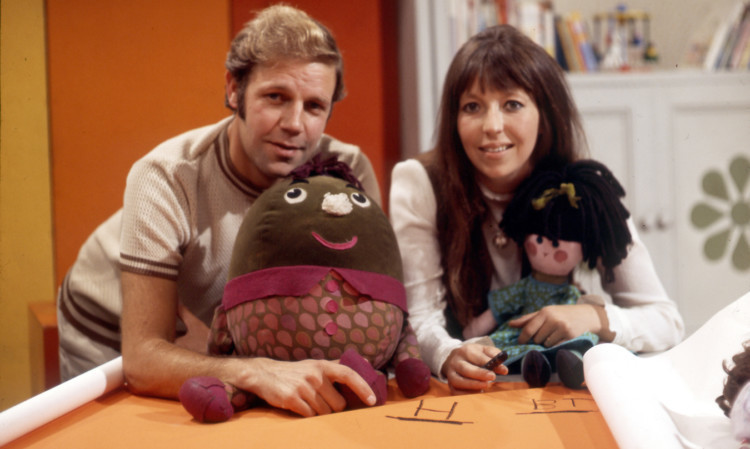
Looking back on what we saw through the square window!
Here’s a house, here’s a door. Windows one, two, three, four. Ready to knock? Turn the lock. It’s Play School.
The first words spoken on BBC2’s first ever programme and a fondly remembered part of childhood for generations.
Now a special reunion is being held to mark the 50th anniversary of Play School.
Former presenters will be among 150 gathering at the Riverside Studios in London where the series started on April 21, 1964.
“It’s taken six months of planning and it’ll probably be the last time everyone gets together as many are in their 70s or 80s,” said organiser Paul Jackson.
“The last one was 20 years after the show finished in 1988 and we had about 40 presenters including Brian Cant, Johnny Ball and Carol Chell.
“Don Spencer flew all the way from Sydney, which shows his affection for the show.”
Virginia Stride and Gordon Rollings were the original duo who welcomed pre-school viewers to the new show with the Round, Arched and Square windows.
For the next 24 years and 5,692 editions, kids would guess which window they’d see through and wait for the clock to introduce Story Time.
Phyllida Law and It Ain’t Half Hot Mum star, Stuart McGugan, were a couple of the Scots presenters who became viewers’ favourites.
“Stuart said that he earned more from Play School, with the repeats, than he did from the comedy programmes,” said Paul.
“Some people in the business were a bit sniffy at doing kids’ TV but it was good money and he’d try and sort his It Ain’t Half Hot filming schedule so he could go and do a week on Play School.
“He absolutely loved it. There were out-takes and they had fun doing it but it was very professional and there was a real warmth about it.
“The difference with Play School was that it talked directly to the child and asked them to get involved. It didn’t ask them to get mum or dad.
“They were the ones singing or dressing up and because they felt it was all theirs, that’s why it was so successful and lasted so long.”
And Elizabeth Millbank, another regular Scot, looks back with affection.
“I was hired for a Christmas programme being filmed around Loch Awe,” recalls Elizabeth.
“At the interview they asked if I could ride a horse. Rather than lie I just said I couldn’t jump fences and ended up on a muddy hillside on a huge bruiser of a horse called Morag.
“I was absolutely terrified but thankfully someone said she liked Pan drops and luckily she never bolted.”
Elizabeth was hired as a regular and spent the next five years on the show.
“It was incredibly hard work as we only had two days rehearsal for five full programmes,” she says.
“It was great fun, though, and great to be a part of such an iconic show.
“I have many fond memories but one in particular was singing Bobbing Along At The Bottom Of The Beautiful Briny Sea with Brian Cant, both of us wearing flippers and goggles.”
Phyllida recalls being terrified by the pressure of cracking through five half-hour programmes in two days and easing on-set tensions by punching Hamble,one of the dolls.
And she also had to continue with a sketch with a mouse, despite it having just died.
The toys, including Humpty, Jemima, Big Ted and Little Ted became a huge part of the show for young fans and are now housed at the National Media Museum in Bradford.
Superfan Paul, who watched as a kid and then met his childhood heroes when working at the BBC, is the author of Here’s A House A Celebration of Play School.
“There was a power cut the previous night when BBC2 was supposed to launch,” he adds. So it was fate that Play School became the first programme and it has become a part of the history of BBC Television.”

Enjoy the convenience of having The Sunday Post delivered as a digital ePaper straight to your smartphone, tablet or computer.
Subscribe for only £5.49 a month and enjoy all the benefits of the printed paper as a digital replica.
Subscribe